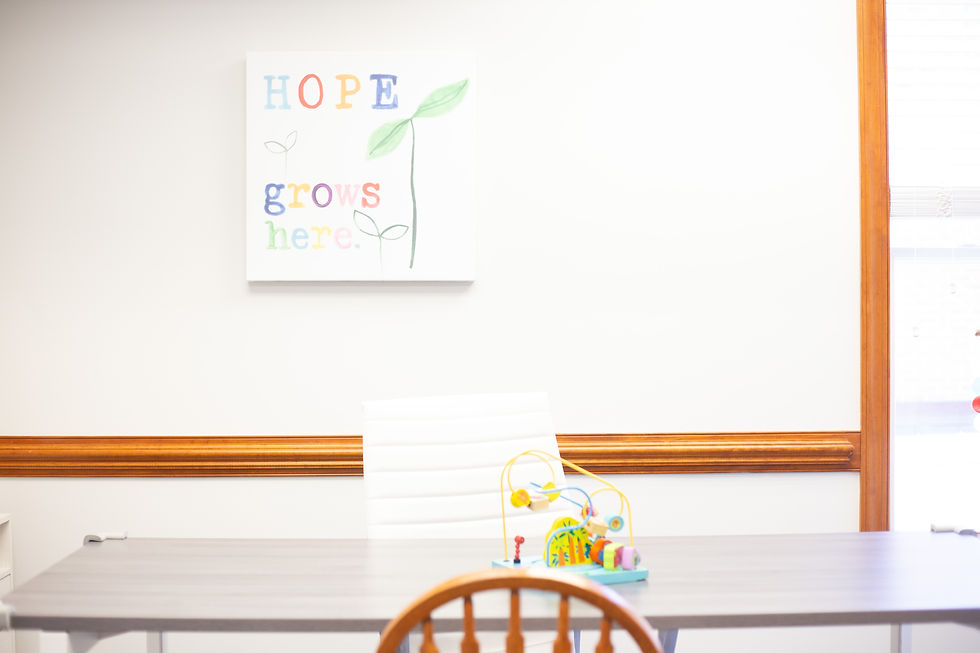During the month of October, we proudly celebrate International AAC Awareness Month. At Therapy Tree Services, we celebrate all forms of communication and firmly believe in the profound impact AAC can have on the lives of children and their families.
AAC - Augmentative and Alternative Communication - is utilized when an individual is unable to effectively communicate using verbal speech alone. This can apply to individuals who are unable to speak at all, as well as those who have some verbal speech but struggle to be understood or convey their thoughts with the necessary complexity. AAC can also serve as a temporary solution for individuals experiencing communication impairments. It serves as a vital tool for providing a voice to both children and adults worldwide. Access to and proficiency in using AAC can be life-changing, as it enables individuals to contribute their thoughts, opinions, emotions, and humor to the conversations around them.
What IS AAC?
AAC, which stands for Augmentative and Alternative Communication, refers to a range of communication methods that can be used alongside or instead of verbal language. It encompasses various forms of non-verbal communication, such as written communication, gestures, sign language, picture communication, and speech generating devices. AAC is typically categorized as low-tech, which includes gestures, sign language, and communication boards, or high-tech, which involves customizable speech-generating devices.
Who Should Use It?
The American Speech-Language-Hearing Association emphasizes that anyone, regardless of age, cognitive abilities, motor planning, or linguistic skills, can use augmentative and alternative communication (AAC). This means that there are no specific prerequisites for getting started with AAC, making it an inclusive and accessible communication tool for people of all abilities.
Where Should We Start?
When it comes to introducing augmentative and alternative communication (AAC) to your child, it's important to understand that there is no universal approach that works for every child. Each child has unique needs, and it's essential to work closely with a speech-language pathologist to determine the best approach for your child and your family. Your child's therapist may recommend a variety of strategies and tools tailored to your child's specific needs and circumstances.
Sign Language - Signing offers a more accessible way to communicate quickly and effectively for children who struggle to express their needs verbally.
Communication Boards - Communication boards provide children with the opportunity to combine words using pictures. These boards can be personalized by a speech-language pathologist to include specific items or phrases that cater to the individual needs of the child.
Picture Exchange Communication Systems (PECS) - Some kids find it easier to understand and communicate using visual aids. The Picture Exchange Communication System (PECS) involves giving a picture to a communication partner to make a request, comment, or respond to a question. This method is rooted in the belief that exchanging symbols is more effective for communication than simply pointing to a picture.
Speech Generating Buttons - Speech buttons provide an accessible method for children to express simple words or phrases. They can use individual buttons or opt for expandable button systems that allow for a wider range of phrases and words. The market offers a diverse selection of buttons, each with its own distinctive features to cater to varying needs.
Speech Generating Devices - These devices provide children with a versatile and adaptable means of communication. Unlike low-tech systems, speech-generating devices offer a significantly larger vocabulary, and there are different options designed to accommodate various levels of motor abilities. Families should seek guidance from a speech-language pathologist to determine the most suitable device based on a child's specific strengths and needs. The speech therapist can also offer ongoing assistance in customizing the device and helping the child learn to use it effectively.
Throughout October, we will debunking some common myths about augmentative and alternative communication (AAC) and dive into some of the materials and resources available to spread the awareness and educate others about AAC.
If you are interested in finding out if your child could benefit from AAC, contact our office at 919.238.9088 or use the “Contact Us” form on our website to schedule an evaluation with one of our speech-language pathologists.


Commentaires